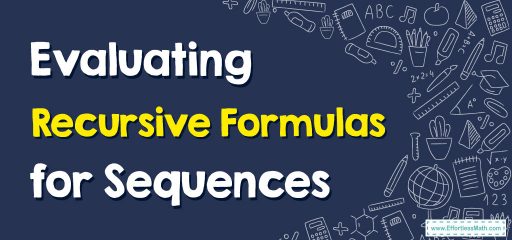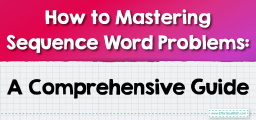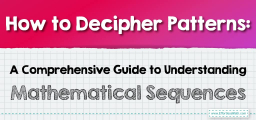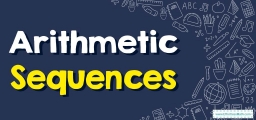How to Evaluate Recursive Formulas for Sequences

To specify a sequence, like any other function, we specify its domain and rule.
In general terms, the sequence rule is called sequence general sentence.
The general statement of a sequence is actually a rule through which each member of the domain corresponds to a member of the range set, that is, the general statement produces the statements of the sequence for each value of changes.
The general sentence of a sequence is represented by the symbol \(a_n\).
Evaluating the recursive formula of a sequence uses the recursive relation and the initial value(s) to find the value of each expression in the sequence.
To better understand this issue, let’s use an example. Consider the recursive formula for the sequence {\(a_n\)} where the recursive relation \(a_n=a_{(n-1)}+4\) and the initial value \(a_1 = 2\).
To find \(a_2\), put \(n=2\) and \(a_1=2\) into the recursive relation: \(a_2 = a_{(2-1)}+4=a_1+2=2+4=6\)
We continue the same process to find the next terms:
\(a_3 =a_{(3-1)}+4=a_2+2=6+4=10\)
\(a_4= a_{(4-1)}+4=a_3+2 =10+4=14\)
\(a_5=a_{(5-1)}+4=a_4+2=14+4=18\)
Therefore, the order of evaluations will be as follows: {\(2, 6, 10, 14, 18\)}.
Important note: In some cases, evaluating the recursive formula for large values of n may be impractical because it requires a lot of time or computing power.
Related to This Article
More math articles
- Improper integrals: Everything A Beginner Needs to Know
- 8th Grade ACT Aspire Math Practice Test Questions
- Types Of Angles In Geometry
- From Tables and Graphs to Equations: How to Master Proportional Relationships
- A Complete Step-by-Step Guide on Euler’s Method
- Geometry Puzzle – Challenge 77
- 3rd Grade NHSAS Math Worksheets: FREE & Printable
- Differentiability: Everything You Need To Know
- Let’s Do the Math on Tesla’s Electric Cars
- TABE Math FREE Sample Practice Questions





















What people say about "How to Evaluate Recursive Formulas for Sequences - Effortless Math: We Help Students Learn to LOVE Mathematics"?
No one replied yet.